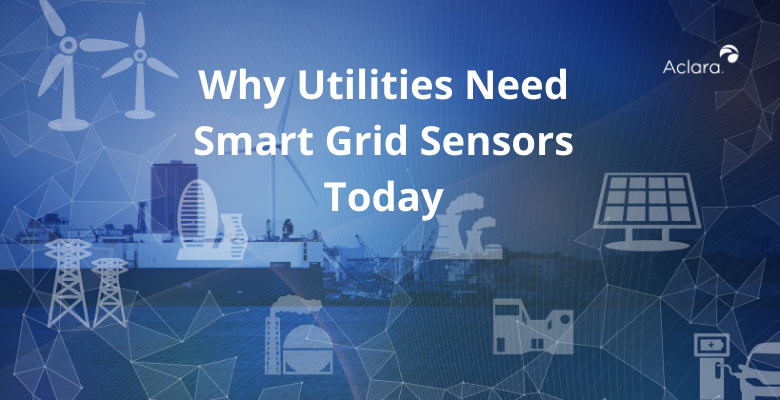Life on earth is changing rapidly and these changes are exacerbated by the current pandemic. Our economy and lifestyle have undergone drastic transformations, with entire companies working from home, schools converting to home-based curriculums, and people seeking out online entertainment options.
In the current atmosphere, we are becoming even more heavily dependent on sensitive electronics to run our lives, creating a push for a reliable and continuous supply of power. Our network operators are under increased pressure to improve reliability and customer service.
Distribution operators know that grid modernization is the only way to strengthen our power grid. Where do we start? How are we to modernize it cost effectively? How do we bridge the gap to a modern grid?
Today’s electrical grid, a wonder of the 20th century, is due for an overhaul, primarily because of the rise of distributed energy resources (DERS). This can only be accomplished by gaining better visibility of what is actually happening on their network. Only then can utilities regain complete situational awareness, allowing them to make more informed and timely operational decisions.
A multitude of solutions exist and are currently in place to monitor distribution substations and circuits. Some involve devices used for basic recording or studies, such as faulted circuit indicators (FCIs), load loggers or power quality analyzers. Others involve remote monitoring and usually entail the use of various combinations of supervisory control and data acquisition (SCADA), substation relays, reclosers, capacitor switches, or other remote terminal units (RTUs), controllers, or even line post sensors, current transformers (CTs) and voltage transformers (VTs) with meters or power quality analyzers.
Limited visibility
While these traditional devices can provide a significant amount of data to distribution network operators on the status of the distribution network, they are limited in a few ways:
- Accuracy of data– Many of the solutions described often require onsite calibration and may be unable to filter out false alarms which can be costly for utilities that send crews to respond using inaccurate information.
- Costs and complexity – Although devices such as battery-powered communicating FCIs are beneficial in identifying line failures and reducing equipment damage, they can be expensive and complex to install in certain circumstances.
- Limited visibility – The information collected by the devices and delivered back to utility personnel can be limited in some instances.
- Single purpose point products – Temporary installed devices used for the analysis of parts of a circuit provide only a limited view of the system’s overall health.
Supplement with smart grid sensors
Smart grid sensors add to utilities’ ability to protect their distribution networks with scalability and cost savings in mind. For example, Aclara’s Grid Monitoring platform enables utilities to improve the reliability, efficiency and power quality of their distribution systems and gain better situational awareness.
The Aclara solution is comprised of:
1: Inductively powered medium voltage sensors and power sensors that operate in very low current environments, as low as 3A, without the need for a battery and minimizing operational costs.
2: Sensor Management System (SMS) software that provides the visibility and situational awareness needed for improved network planning and grid reliability.
As a software management and reporting tool, SMS is designed to first, simplify remote management and configuration of sensors and second, to provide network operators easy access to the data they need to strategize their plan of attack to operate the grid. The software uniquely classifies power disturbance events. But the real strength behind SMS lies in its powerful analytics.
The power of analytics
SMS software enables the capture of waveforms, which critical to identify unusual or recurring permanent and transient faults or power quality issues. SMS gathers data, classifies power disturbance events and provides the visualization and situational awareness needed to quickly respond to outages and faults, and to support switching and load planning efforts.
But the true power of SMS lies in its Predictive Grid® Analytics capabilities. With predictive analytics, Aclara can identify line disturbances, the key to prevent future outages and predict equipment failures to improve grid reliability, even on your worst performing circuits. Kevin Corcoran, Aclara’s Grid Monitoring Director of Product Management, said:
“More than 80 percent of grid events are classified as line disturbances – short-term, transient events caused by small amounts of fault current that do not immediately cause outages. However, certain line disturbances are proven to be precursors to outages and grid equipment failures which existing monitoring systems, such as supervisory control and data acquisition (SCADA), are unable to detect.”
With the power of analytics, utilities can now manage rule-based identification patterns to find weak spots on their grid BEFORE they become outages, while simultaneously protecting their major assets – substations, transformers, capacitor banks and reclosers – with around-the-clock monitoring.
Plus, smart grid sensors can be used as a standalone solution, they also work well alongside other grid products to provide increased visibility to systems such SCADA and DMS systems. To date, Aclara has integrated with other solutions from companies including OSIsoft, Alstom, Schneider/Telvent, Elipse, Survalent, Nortech (iHost), GE Digital Energy (PowerOn), ABB, OpusOne Solutions, PQView and ArcGIS.
Want to know more? We offer a wide range of application guides on our website to explain how to use the Aclara Grid Monitoring platform with smart grid sensors for applications as diverse as substation monitoring to wildfire mitigation. To learn more, download our application guides

